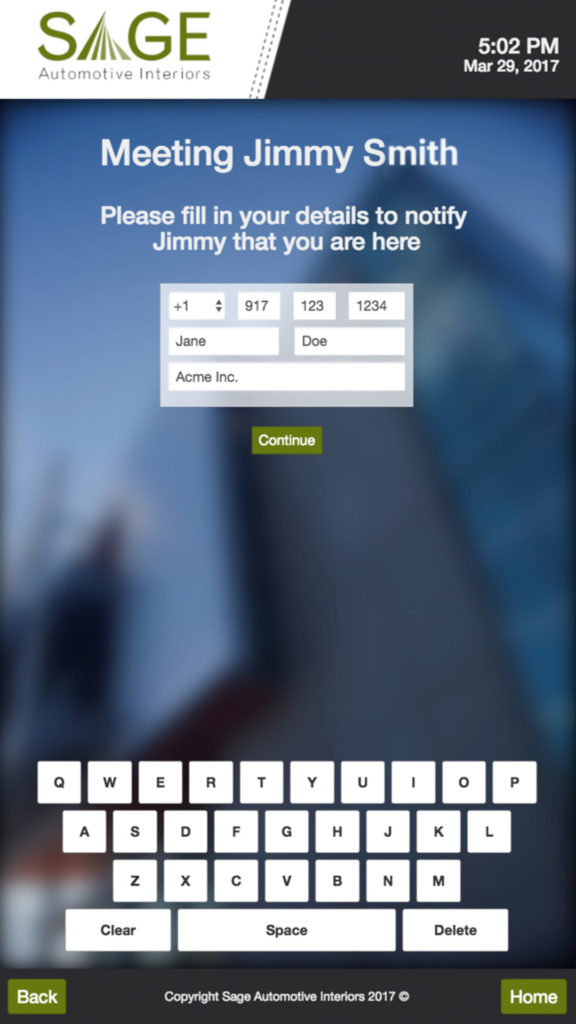The traditional pen-and-paper sign-in sheet at the front desk looks and feels outdated in most environments. In today's digital-first world, it's not just about looking modern (though that's a plus!). It's about efficiency, security, and creating a positive experience for everyone who walks through your doors. As experienced professionals in the kiosk and digital signage industry, we've seen firsthand how transitioning to a digital visitor management system (VMS) can transform a lobby from a bottleneck to a streamlined welcome center.

Why Ditch the Paper Trail? The Benefits of Digital Visitor Management
Think about your typical workday. How often do you prefer self-service options? Whether it's checking out at the grocery store or researching a product online, we all value efficiency and control over our time. This preference extends to visitor check-ins as well.
Here's why a digital VMS makes sense:
Enhanced Security:
This is a big one. Knowing who is in your building at all times is paramount. Digital systems can capture accurate visitor information, verify identities, print photo badges, and even conduct background checks if needed. This is a significant upgrade from illegible handwriting and potentially fake names on a paper log. Plus integrating with access control systems, a VMS can further enhance security protocols.
Improved Efficiency:
No more waiting for a receptionist to become available. Visitors can quickly self-register using a touchscreen check-in kiosk, freeing up your staff to focus on other tasks. The system can automatically notify employees of their guest's arrival via email or SMS, further streamlining the process.
Professional First Impression:
Your lobby is the first physical touchpoint for visitors. A sleek, modern digital kiosk with a user-friendly interface makes a strong statement about your company's commitment to innovation and efficiency.
Data and Analytics:
Digital systems provide valuable data on visitor traffic patterns, peak hours, and visit durations. This information can be used to optimize staffing levels, improve security protocols, and make data-driven decisions about your facility.
Compliance and Legal Protection:
Many industries have regulations regarding visitor logging and data privacy (like GDPR). A robust visitor management system can help ensure compliance and provide an audit trail in case of any incidents.
Integration with Other Systems:
Modern VMS solutions often integrate with other building management systems, such as access control, calendar applications, and emergency notification systems. This creates a cohesive and efficient ecosystem for managing your facility.
Health and Safety:
Especially relevant in recent times, VMSes can facilitate contactless check-in, health screenings, and capacity management to ensure a safe environment for everyone. This could include features like pre-registration health questionnaires or integration with temperature scanning devices.

What to Look for in a Visitor Management System: Key Features
Not all visitor management solutions are created equal. Here are some essential features to consider:
- User-Friendly Interface: The system should be intuitive and easy to use for visitors of all technical abilities. A touchscreen kiosk with clear instructions and multiple language options is ideal.
- Customization: The system should be adaptable to your specific needs. This includes customizable workflows, branding options, and the ability to tailor the registration process to different visitor types (guests, contractors, deliveries, etc.).
- ID Verification and Badge Printing: The ability to scan IDs, capture photos, and print customized badges (with barcodes or QR codes) is crucial for security and identification purposes. Some systems even offer temporary badges that expire after a certain time.
- Employee Notifications: Automated notifications via email, SMS, or integration with communication platforms like Slack or Microsoft Teams ensure that employees are promptly alerted to their visitors' arrival.
- Reporting and Analytics: The system should provide detailed reports on visitor activity, allowing you to track trends, identify bottlenecks, and make data-informed decisions.
- Security and Data Privacy: Ensure the system complies with relevant data privacy regulations and offers robust security features to protect sensitive information. Look for features like data encryption and secure cloud storage.
- Integration Capabilities: The ability to integrate with your existing access control, calendar, and other building management systems is a significant advantage.
- Scalability: Choose a system that can grow with your needs. As your organization expands or your visitor volume increases, you'll want a VMS that can adapt without requiring a complete overhaul.

Making the Transition: It's Easier Than You Think
Switching to a digital VMS might seem daunting, but it doesn't have to be. Partnering with an experienced provider can make the process smooth and seamless. They offer comprehensive support, from initial consultation and system design to installation, training, and ongoing technical assistance.
The Bottom Line: Investing in a Modern Visitor Management System is Investing in Your Future
By embracing digital visitor management, you're not just upgrading your lobby; you're enhancing security, improving efficiency, and creating a more positive experience for everyone who interacts with your organization. It's a smart investment that pays dividends in the long run.
Ready to explore how a digital visitor management system can benefit your organization? Contact us today to learn more and request a quote.
Disclaimer: This information is intended for general guidance and may not be applicable to every organization's unique situation. Consult with security and legal professionals for tailored recommendations. Remember to comply with all relevant accessibility regulations when implementing visitor management solutions.



